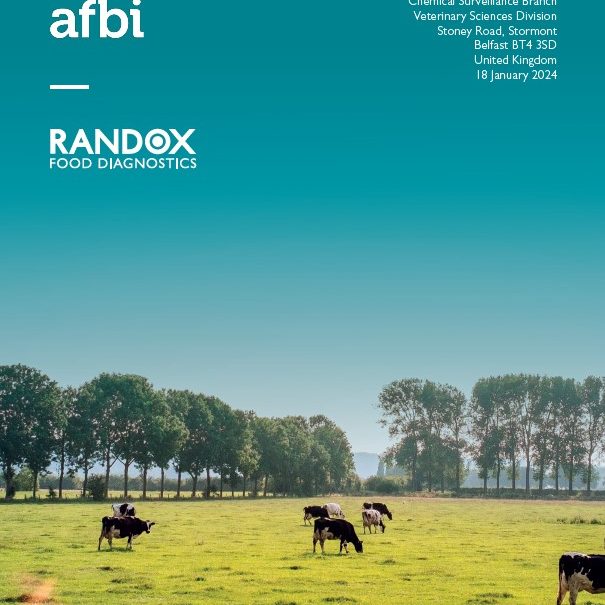
An Independent Abridged Validation of the Randox Evidence Investigator™ InfiniPlex for Milk Array II
The Chemical Surveillance Branch (CSB) of the Agri-Food and Biosciences Institute (AFBI), Belfast, (an Official Laboratory (OL)) carried out an independent abridged validation of the Randox Evidence Investigator™ InfiniPlex for Milk Array II kit (Catalogue number EV4301) for the simultaneous qualitative detection of a range of pharmacologically active substances in raw commingled bovine milk which was determined to be free from the residues by a certified LC-MS procedure performed at this Institute.
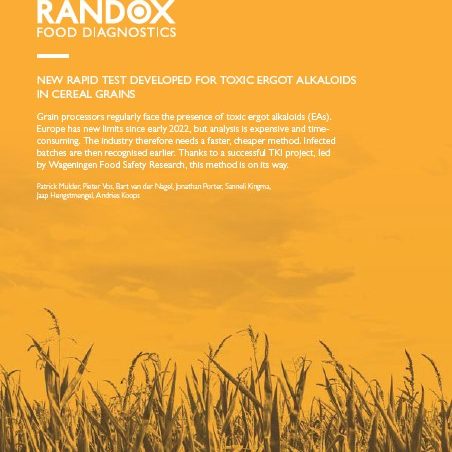
New Rapid Test Developed for Toxic Ergot Alkaloids in Cereal Grains
Grain processors regularly face the presence of toxic ergot alkaloids (EAs). Europe has new limits since early 2022, but analysis is expensive and time[1]consuming. The industry therefore needs a faster, cheaper method. Infected batches are then recognised earlier. Thanks to a successful TKI project, led by Wageningen Food Safety Research, this method is on its way.
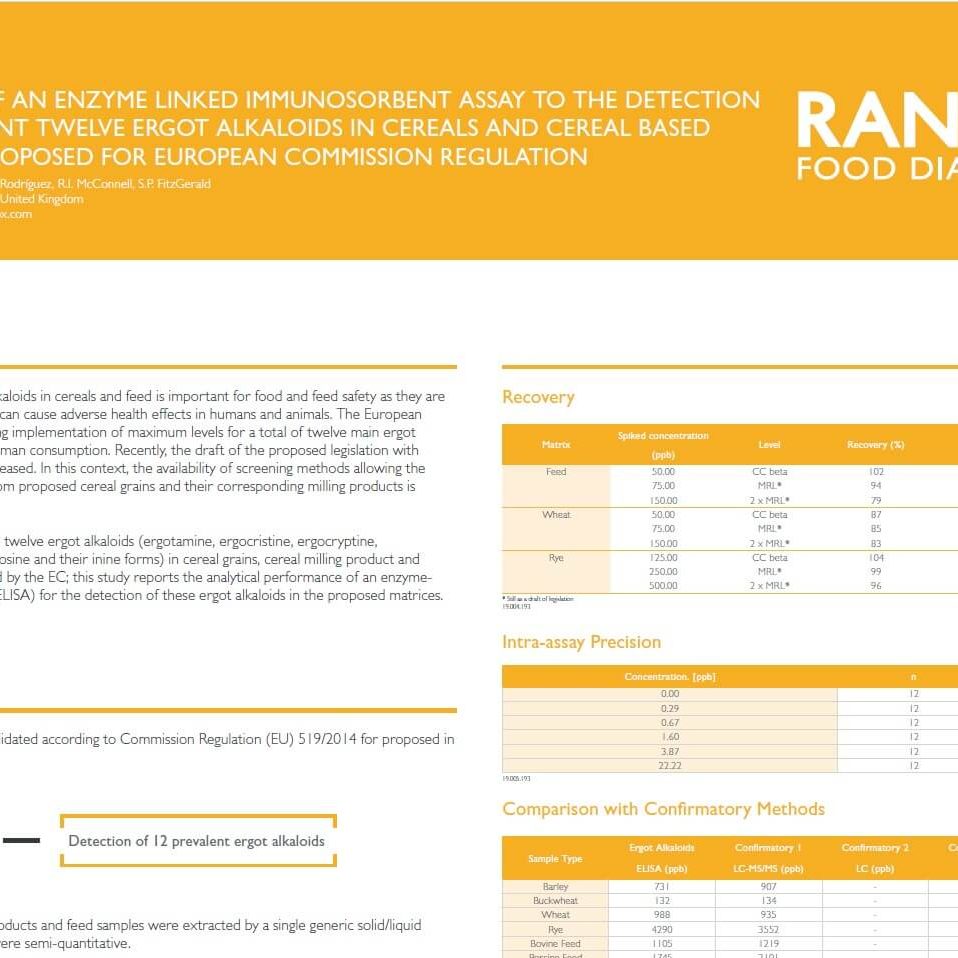
Application of an Enzyme Linked Immunosorbent Assay to the Detection of all Prevalent Twelve Ergot Alkaloids in Cereals and Cereal-Based Animal Feed Proposed for European Commission Regulation
Aiming to the detection of the twelve ergot alkaloids (ergotamine, ergocristine, ergocryptine, ergocornine, ergometrine, ergosine and their inine forms) in cereal grains, cereal milling product and cereal-based feed, as proposed by the EC; this study reports the analytical performance of an enzyme-linked immunosorbent assay (ELISA) for the detection of these ergot alkaloids in the proposed matrices.
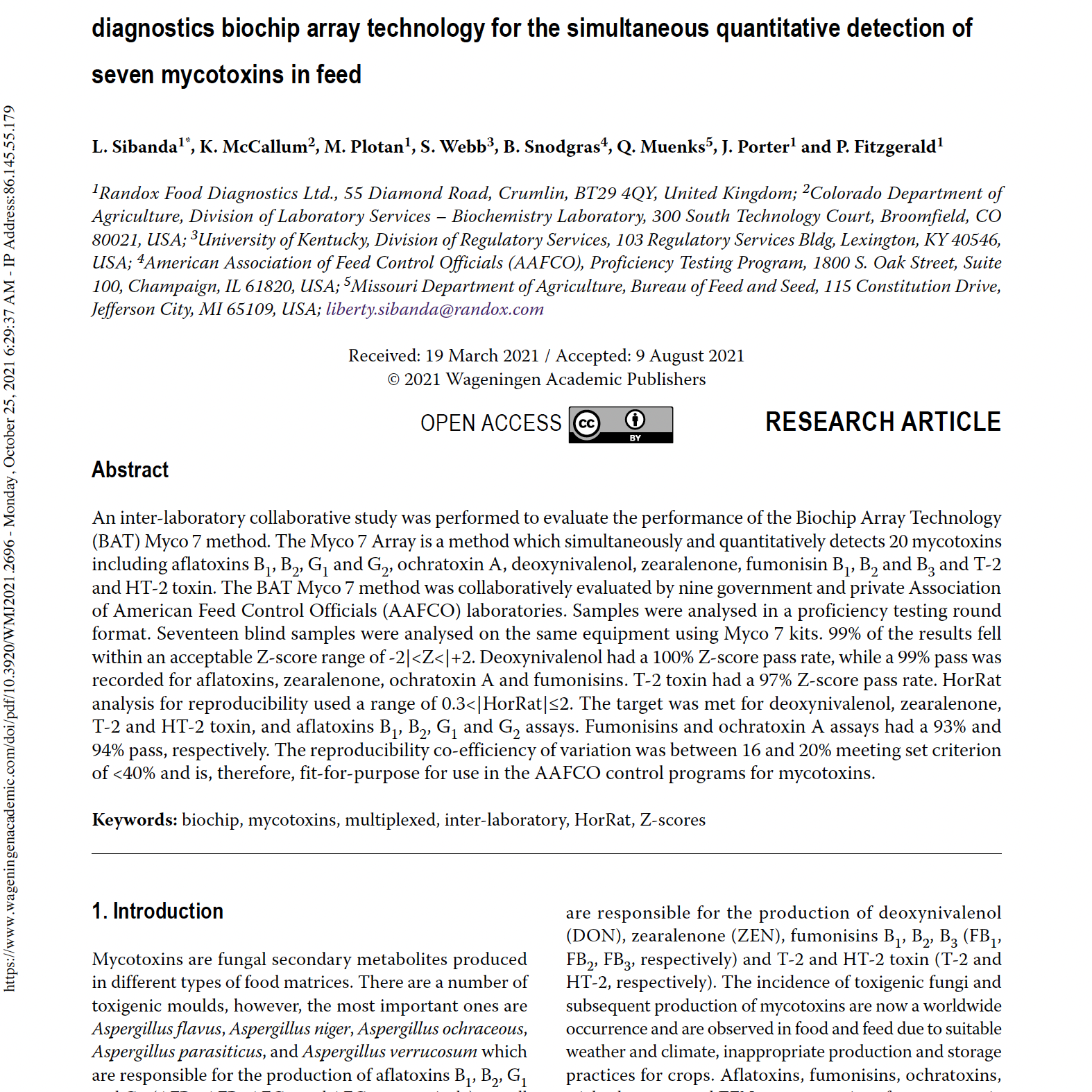
Interlaboratory Collaboration to Determine the Performance of the Randox Food Diagnostics Biochip Array Technology for the Simultaneous Quantitative Detection of Seven Mycotoxins in Feed
An inter-laboratory collaborative study was performed to evaluate the performance of the Biochip Array Technology (BAT) Myco 7 method. The Myco 7 Array is a method which simultaneously and quantitatively detects 20 mycotoxins including aflatoxins B1, B2, G1 and G2, ochratoxin A, deoxynivalenol, zearalenone, fumonisin B1, B2 and B3 and T-2 and HT-2 toxin.
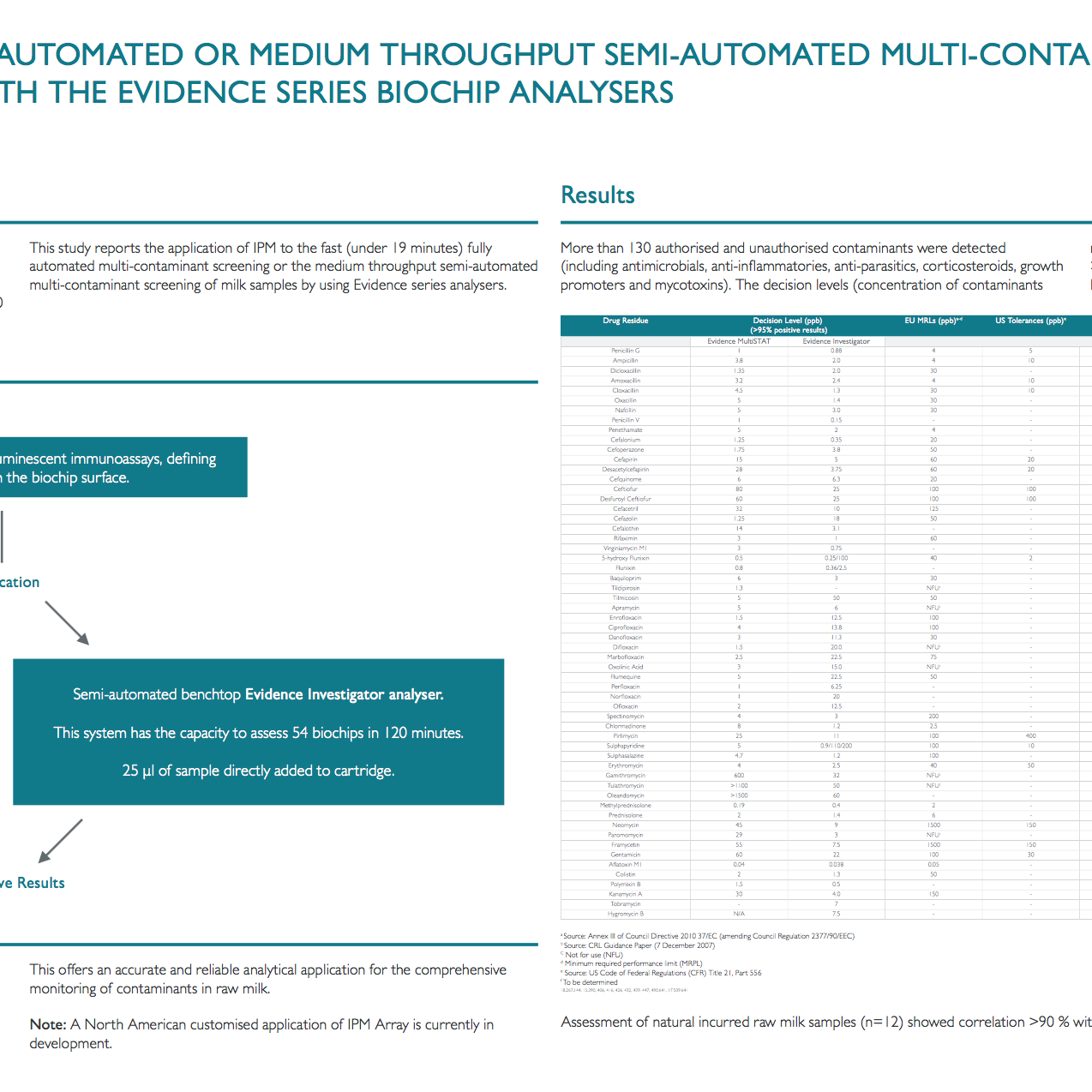
Fast (Under 19 Minutes) Fully Automated Or Medium Throughput Semi-Automated Mutli-Contaminant Screening of Milk Samples With The Evidence Series Biochip Analysers
Comprehensive detection of veterinary drugs in milk, including all legislated antibiotics at or below relevant regulatory requirements, is important for consumer protection. The Infiniplex for Milk (IPM) biochip array, based on biochip array technology, allows the simultaneous screening of approximately 130 contaminants from a single undivided milk sample.
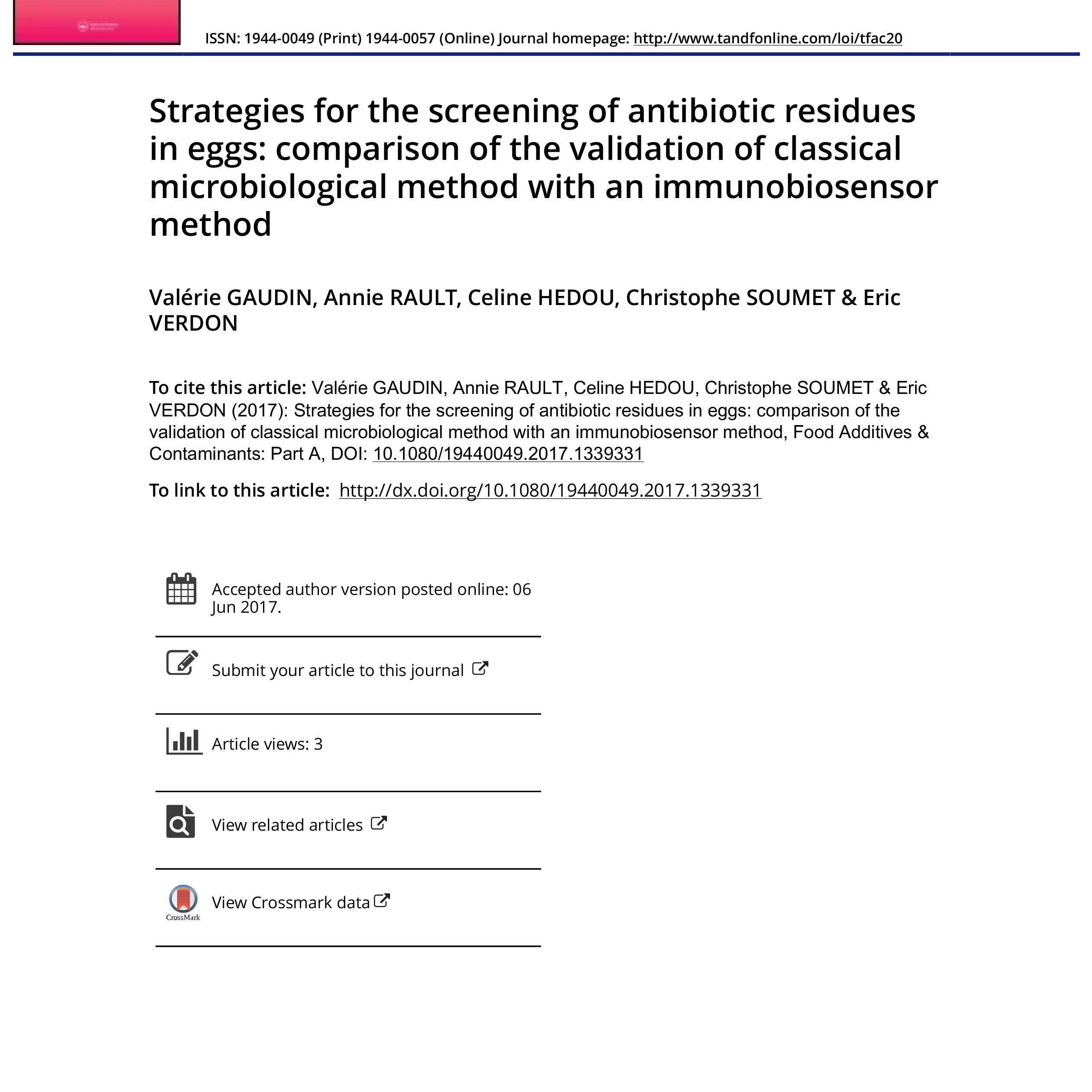
Strategies for the Screening of Antibiotic Residue in Eggs: Comparison of the Validation of Classical Microbiological Method with an Immunobiosensor Method
Efficient screening methods are needed to control antibiotic residues in eggs. A microbiological kit (Explorer 2.0 test (Zeu Inmunotech, Spain) and an immunobiosensor kit (Microarray II (AM® II) on the Evidence InvestigatorTM system (Randox, UK) have been evaluated and validated for screening of antibiotic residues in eggs, according to Decision EC/2002/657 (2002) and to the European guideline for the validation of screening methods (Crl 2010).
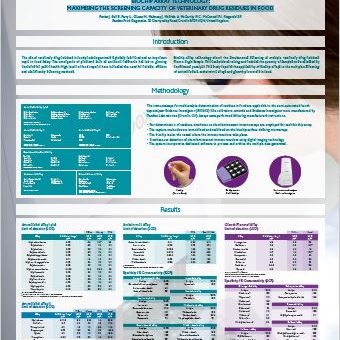
Biochip Array Technology: Maximising the Screening Capacity of Veterinary Drug Residues in Food
The use of veterinary drug residues in food producing animals is globally restricted and an important topic in food safety. The emergence of problems such as antibiotic resistance has led to growing concerns for public health. high levels of food imports have increased the need for reliable, efficient and user-friendly screening methods.
Biochip array technology allows the simultaneous screening of multiple veterinary drug residues from a single sample. This consolidates testing and reduces the quantity of samples to be assessed by confirmatory analysis. This study reports the applicability of biochip arrays to the multiplex screening of antimicrobials , anthelmintic drugs and growth promoters in food.
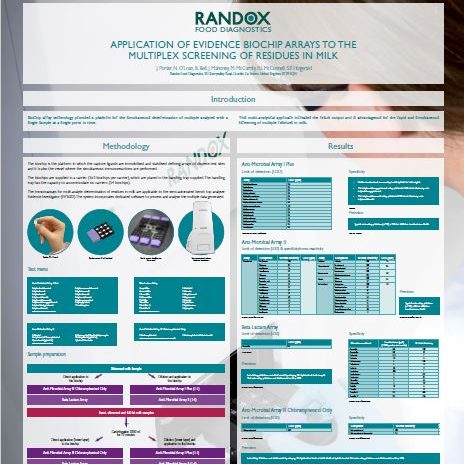
Application of Evidence Biochip Arrays to the Multiplex Screening of Residues in Milk
Biochip array technology provides a platform for the simultaneous determination of multiple analytes with a single sample at a single point in time. This multi-analytical approach increases the result output and is advantageous for the rapid and simultaneous screening of multiple residues in milk.
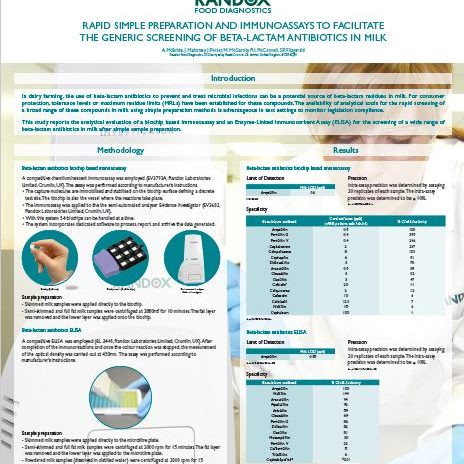
Rapid Simple Preparation and Immunoassays to Facilitate the Generic Screening of Beta-Lactam Antibiotics in Milk
In dairy farming, the use of beta-lactam antibiotics to prevent and treat microbial infections can be a potential source of beta-lactam residues in milk. For consumer protection, tolerance levels or maximum residue limits (MRLs) have been established for these compounds. the availability of analytical tools for the rapid screening of a broad range of these compounds in milk using simple preparation methods is advantageous in test settings to monitor legislation compliance.
This study reports the analytical evaluation of a biochip based Immunoassay and an Enzyme-Linked Immunosorbent Assay (ELISA) for the screening of a wide range of beta-lactam antibiotics in milk after simple sample preparation.
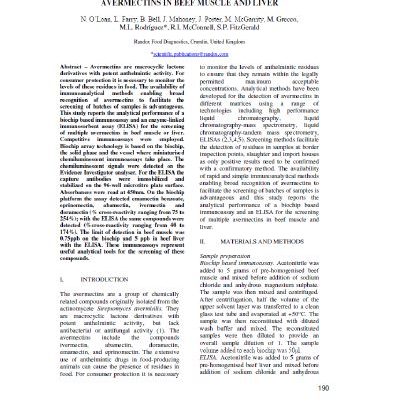
Biochip Based Immunoassay and Enzyme-Linked Immunosorbent Assay for the Screening of Multiple Avermectins in Beef Muscle and Liver
In dairy farming, the use of beta-lactam antibiotics to prevent and treat microbial infections can be a potential source of beta-lactam residues in milk. For consumer protection, tolerance levels or maximum residue limits (MRLs) have been established for these compounds. the availability of analytical tools for the rapid screening of a broad range of these compounds in milk using simple preparation methods is advantageous in test settings to monitor legislation compliance.
This study reports the analytical evaluation of a biochip based Immunoassay and an Enzyme-Linked Immunosorbent Assay (ELISA) for the screening of a wide range of beta-lactam antibiotics in milk after simple sample preparation.

Applicability of Biochip-based immunoassays to the detection of pesticides
Pesticides are broadly applied to kill pests and their application to agricultural crops have a negative impact on bees, which can contribute to the loss of bee colonies. The widespread release of pesticides into the environment can also contribute to the occurrence of pesticides
in the food supply. Pesticides are regulated globally by various governmental agencies. The availability of screening methods allowing the detection of pesticides is then beneficial in test settings to monitor their presence to ensure food safety.
This study reports the applicability of biochip-based immunoassays to the detection of acetamiprid/thiacloprid, azoxystrobin, carbaryl, clothianidin, coumaphos, fenpyroximate, imidacloprid and thiamethoxam.
Pesticides are broadly applied to kill pests and their application to agricultural crops have a negative impact on bees, which can contribute to the loss of bee colonies. The widespread release of pesticides into the environment can also contribute to the occurrence of pesticides
in the food supply. Pesticides are regulated globally by various governmental agencies. The availability of screening methods allowing the detection of pesticides is then beneficial in test settings to monitor their presence to ensure food safety.
This study reports the applicability of biochip-based immunoassays to the detection of acetamiprid/thiacloprid, azoxystrobin, carbaryl, clothianidin, coumaphos, fenpyroximate, imidacloprid and thiamethoxam.
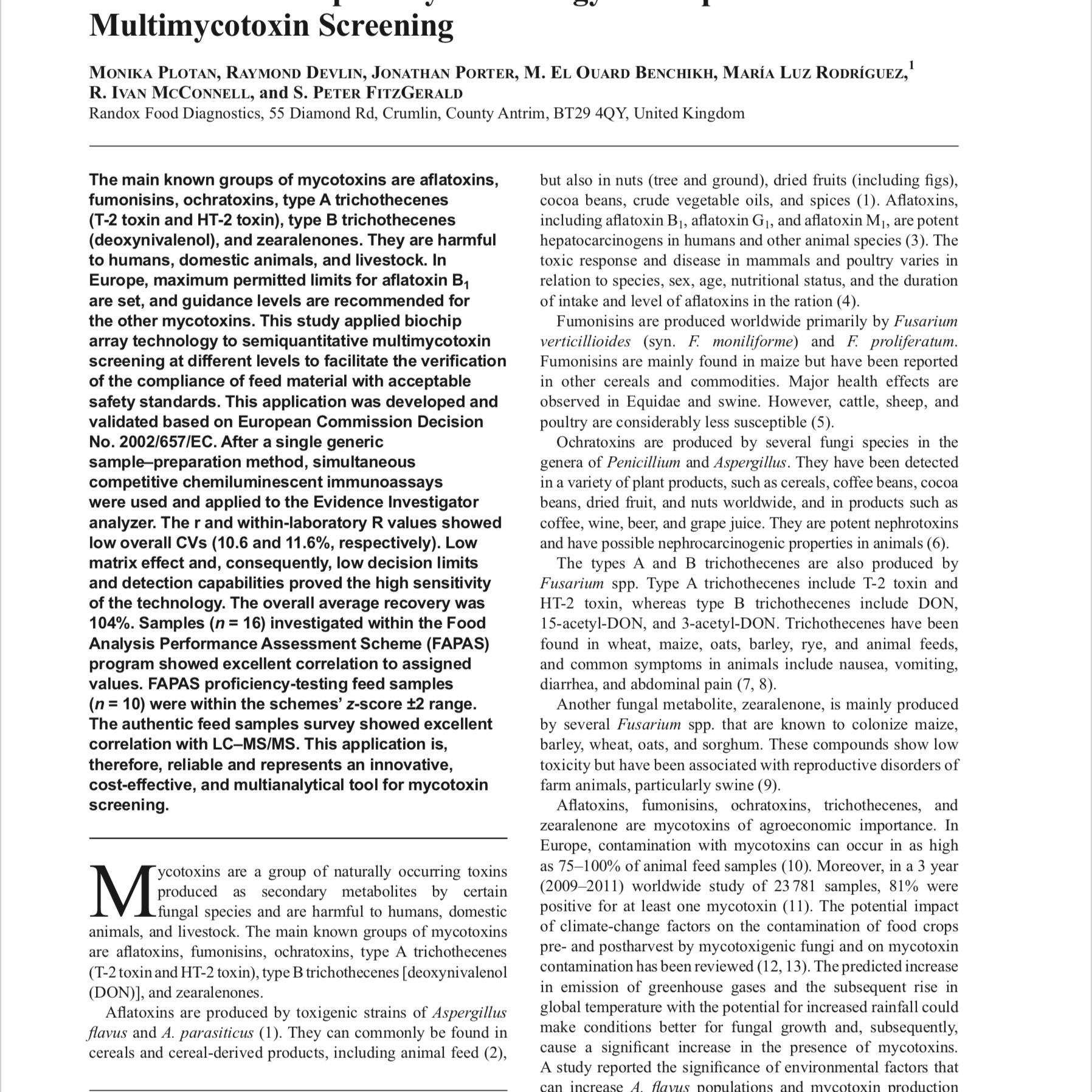
The Use of Biochip Array Technology for Rapid Multimycotoxin Screening
Biochip array kit and analyzer.—Simultaneous semiquantitative screening of mycotoxins in feed was carried out using the Myco 7 biochip array kit (EV4065; Randox Food Diagnostics, Crumlin, United Kingdom).
The kit contains multianalyte biochips, assay diluent, conjugate diluent, multianalyte conjugate, a set of multianalyte calibrators (spanning the range of each assay), multianalyte controls, signal reagent, washing buffer, calibration disc, and barcodes.
The biochips were supplied in carriers (3 × 3 biochips per carrier), and a carrier handling tray was provided with the system that allows the simultaneous handling of six carriers (54 biochips). Data were generated and processed with the semiautomated benchtop biochip analyzer Evidence Investigator (EV3602; Randox Food Diagnostics, Crumlin, United Kingdom).
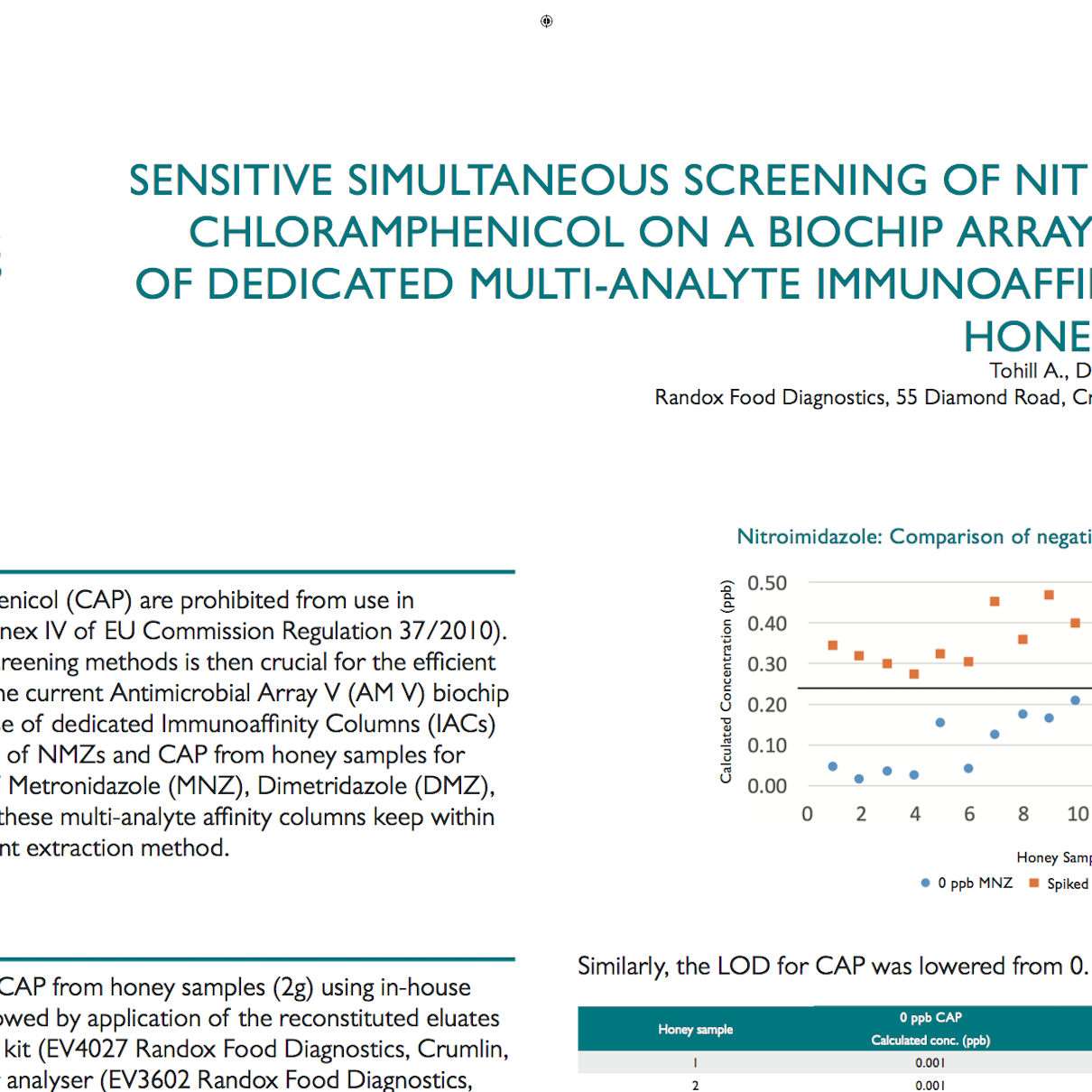
Application of an easy to use assay kit on the RX misano analyser for the reliable determination of HMF in honey
Hydroxymethylfurfural (HMF) is produced by acid-catalyzed dehydration of sugars, primarily fructose. HMF occurs naturally over time in most honeys but elevated concentrations provide an indication of overheating, poor storage conditions, possible adulteration with other sugars or syrups and/or higher age of the honey.
The levels of HMF in honey are regulated in many countries, therefore reliable analytical tools for the determination of HMF are relevant to monitor the conformity of honey to regulatory standards. This study reports the application of an easy to use assay kit applied to the RX misano analyser for the reliable determination of HMF in honey.

Simple measurement of D-Glucose, D-Fructose and sucrose in honey with two assay kits applied to the RX misano analyser
Honey is a natural product composed mainly of sugars, water and also a wide range of other minor constituents such as phenolic compounds. Fructose and glucose are the main sugars present in honey, the remainder includes disaccharides (e.g. sucrose) and higher oligosaccharides. Sugar content of honey has been considered a measure of the purity and important in quality control of honey.
The development of analytical methods which monitor the compliance to quality specific cation, facilitates fraud prevention and the protection of authentic honeys. This study reports the analytical performance of two assay kits, one for the determination of D-glucose and D-fructose and the other for the determination of sucrose in honey samples, involving simple sample preparation.
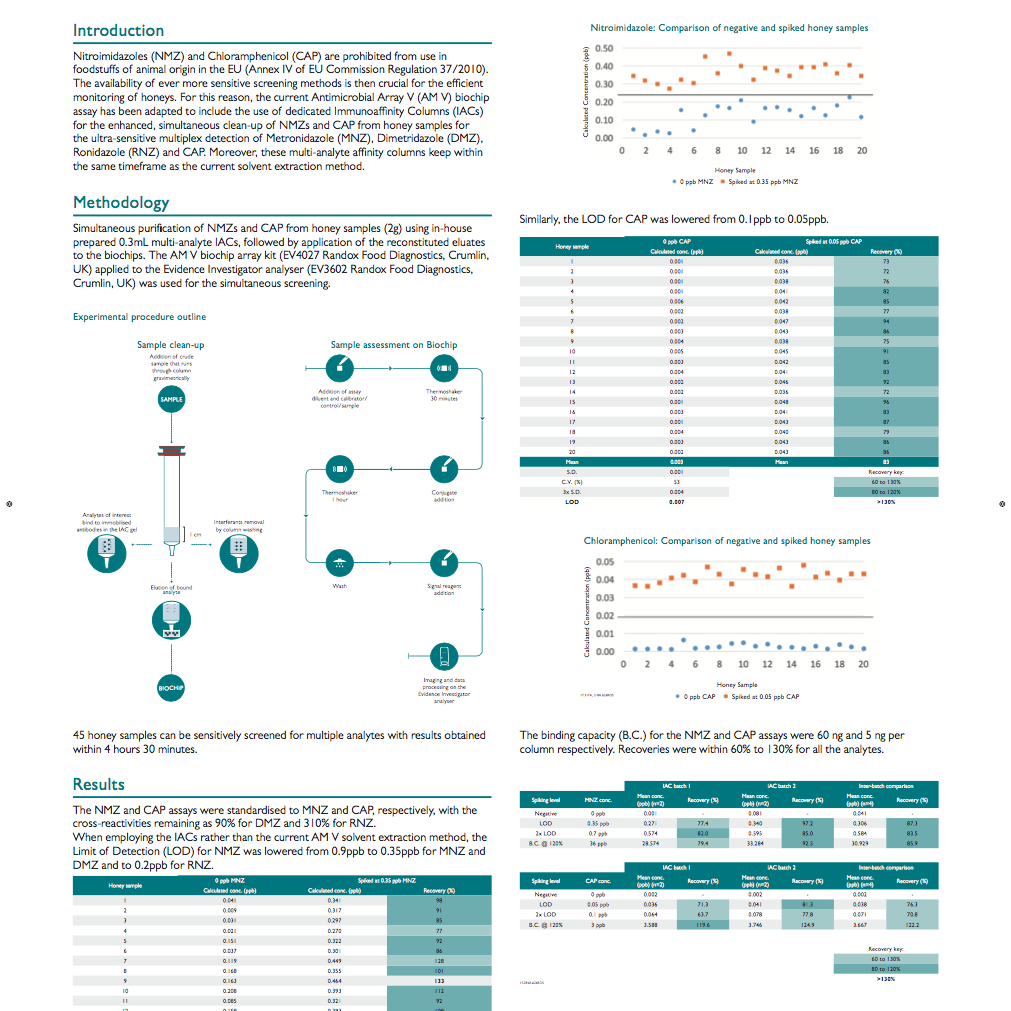
Sensitive simultaneous screening of Nitroimidazoles and chloramphenicol on a Biochip Array through the use of dedicated multi-analyte immunoaffinity columns for honey sample clean-up
Nitroimidazoles (NMZ) and Chloramphenicol (CAP) are prohibited from use in foodstuffs of animal origin in the EU (Annex IV of EU Commission Regulation 37/2010). The availability of ever more sensitive screening methods is then crucial for the efficient monitoring of honeys. For this reason, the current Antimicrobial Array V (AM V) biochip assay has been adapted to include the use of dedicated Immunoaffinity Columns (IACs) for the enhanced, simultaneous clean-up of NMZs and CAP from honey samples for the ultra-sensitive multiplex detection of Metronidazole (MNZ), Dimetridazole (DMZ), Ronidazole (RNZ) and CAP. Moreover, these multi-analyte affinity columns keep within the same timeframe as the current solvent extraction method.
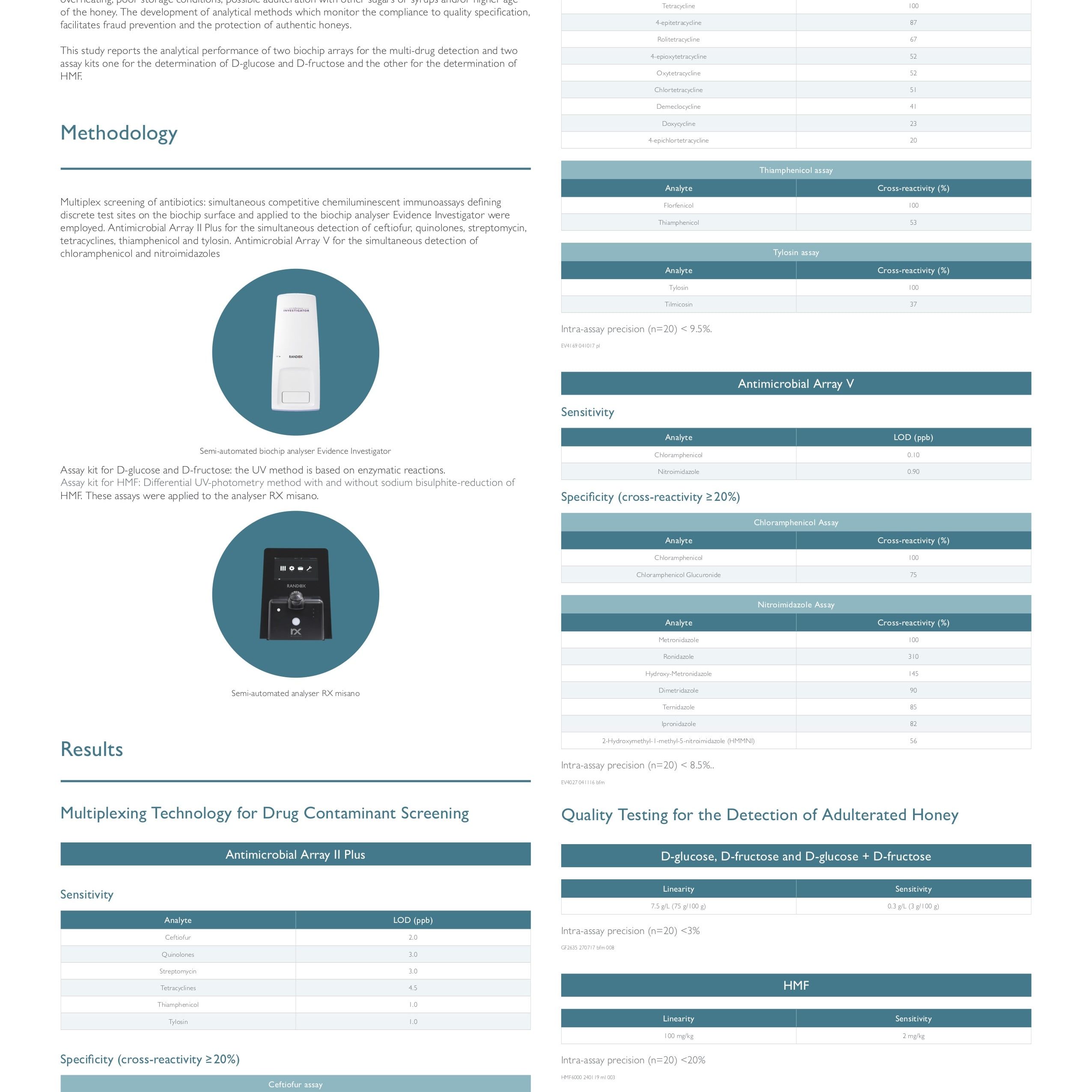
Full profile for honey testing with both multiplexing technology for drug contaminant screening and quality testing for the detection of adulterated honey
Antibiotic drug residues in honey pose a potential risk to human health though they are used worldwide in apiculture to treat or prevent bacterial diseases. Biochip array technology (BAT) allows the multiplex screening of antibiotics from a single honey sample.
Fructose and glucose are the main sugars present in honey. Hydroxymethylfurfural (HMF) is produced by acid-catalyzed dehydration of sugars. Sugar content of honey has been considered a measure of the purity and important in quality control of honey. Elevated concentrations of HMF provide an indication of overheating, poor storage conditions, possible adulteration with other sugars or syrups and/or higher age of the honey. The development of analytical methods which monitor the compliance to quality specification, facilitates fraud prevention and the protection of authentic honeys.
This study reports the analytical performance of two biochip arrays for the multi-drug detection and two assay kits one for the determination of D-glucose and D-fructose and the other for the determination of HMF.
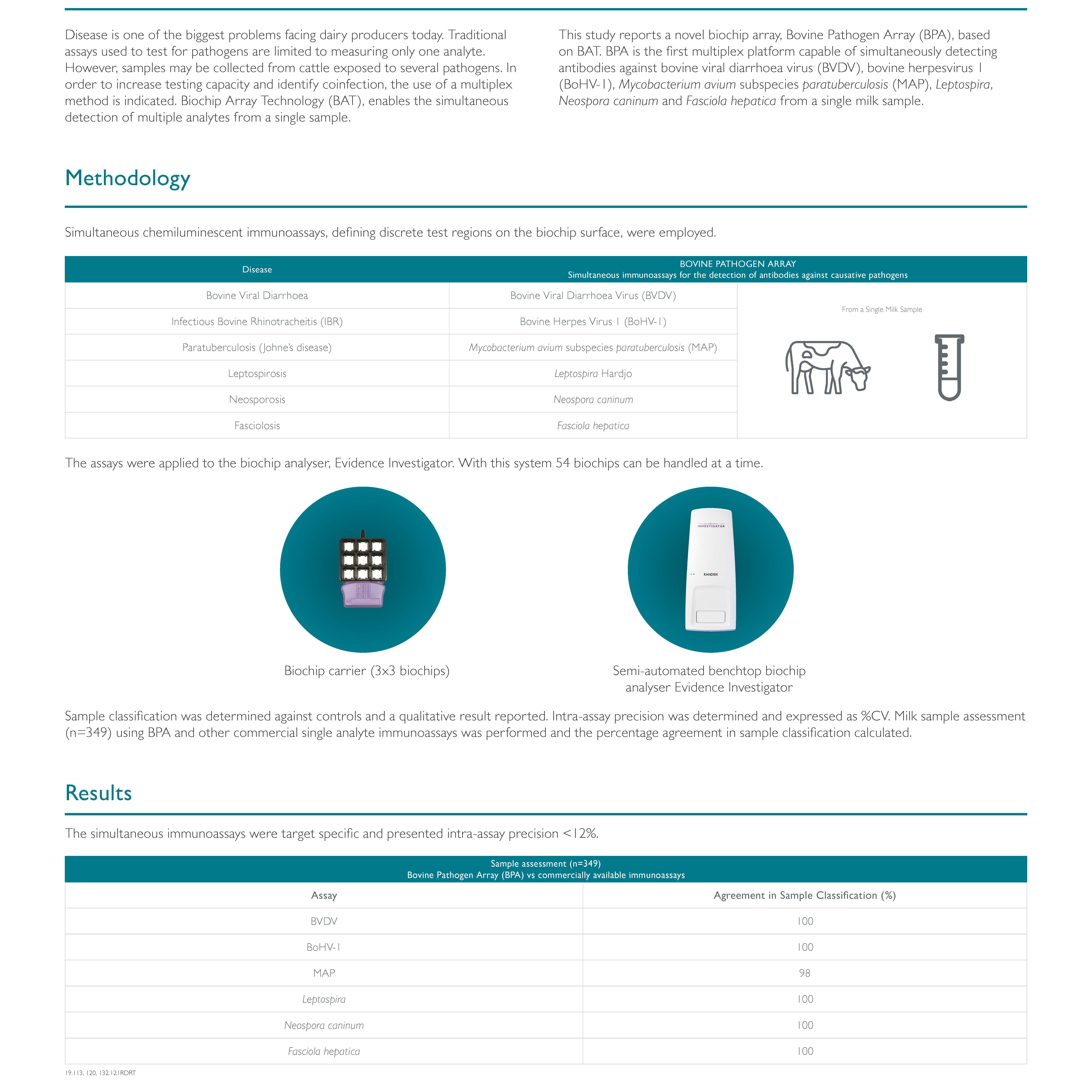
Enhanced Disease Surveillance using Milk and a Novel Multiplex Bovine Pathogen Array
Disease is one of the biggest problems facing dairy producers today. Traditional assays used to test for pathogens are limited to measuring only one analyte. However, samples may be collected from cattle exposed to several pathogens. In order to increase testing capacity and identify coinfection, the use of a multiplex method is indicated. Biochip Array Technology (BAT), enables the simultaneous detection of multiple analytes from a single sample.
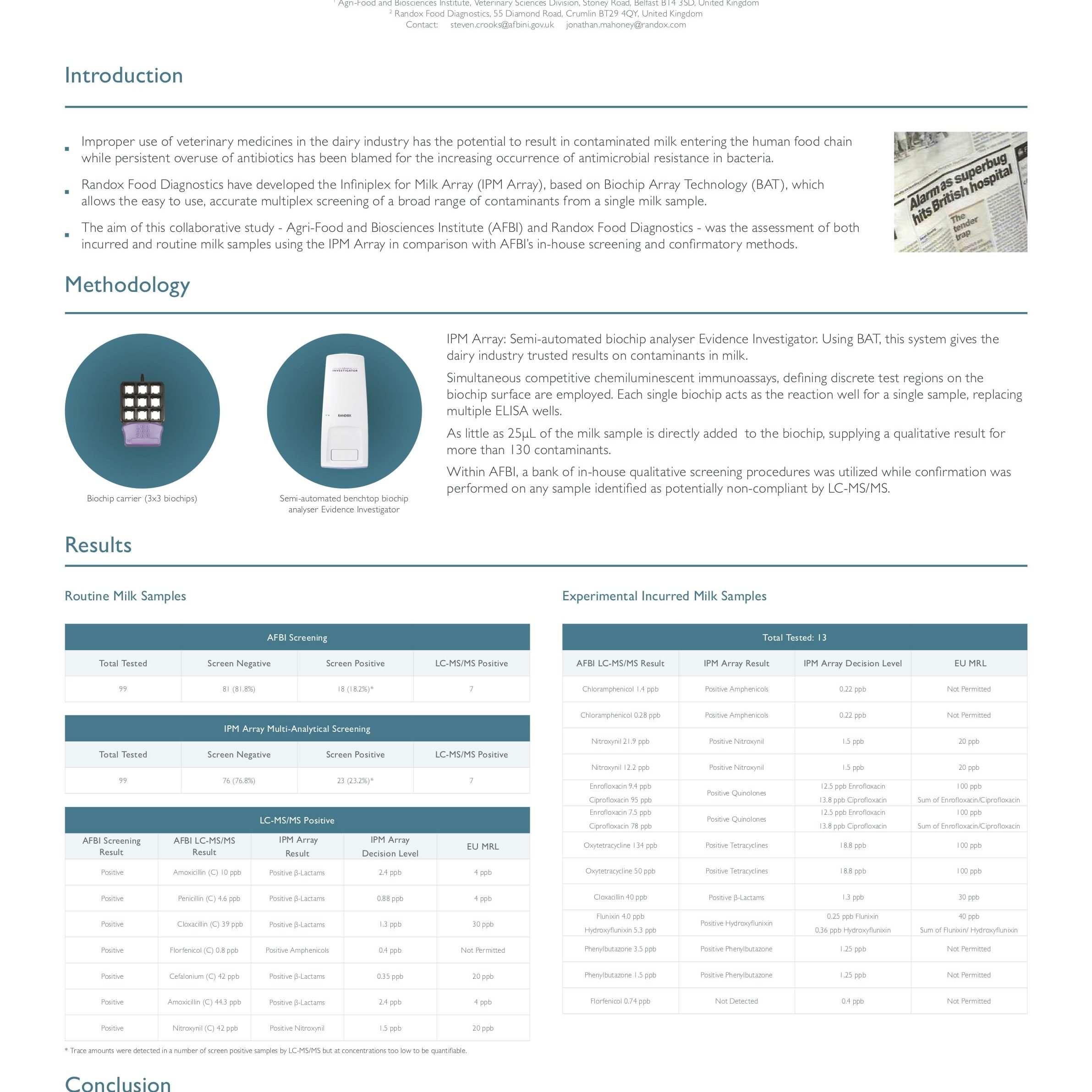
Comparative Milk Sample Assessment for Multiple Contaminants: Infiniplex for Milk Array and other Methods
Randox Food Diagnostics have developed the Infiniplex for Milk Array (IPM Array), based on Biochip Array Technology (BAT), which allows the easy to use, accurate multiplex screening of a broad range of contaminants from a single milk sample.
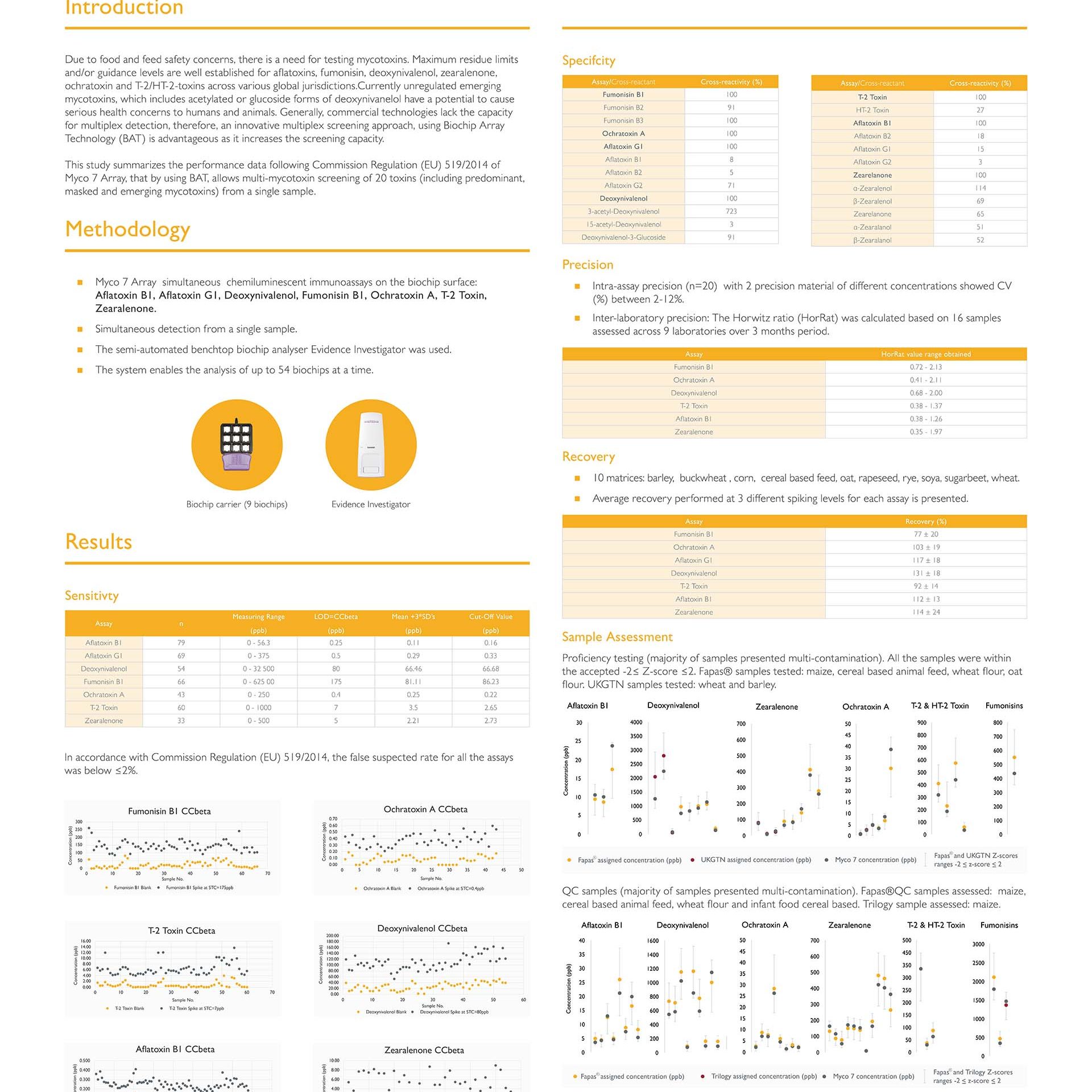
Innovative Multiplex Technology, Challenges and the Future of Mycotoxin Determination for Predominant, Masked and Emerging Mycotoxins
Due to food and feed safety concerns, there is a need for testing mycotoxins. Maximum residue limits and/or guidance levels are well established for aflatoxins, fumonisin, deoxynivalenol, zearalenone, ochratoxin and T-2/HT-2-toxins across various global jurisdictions.
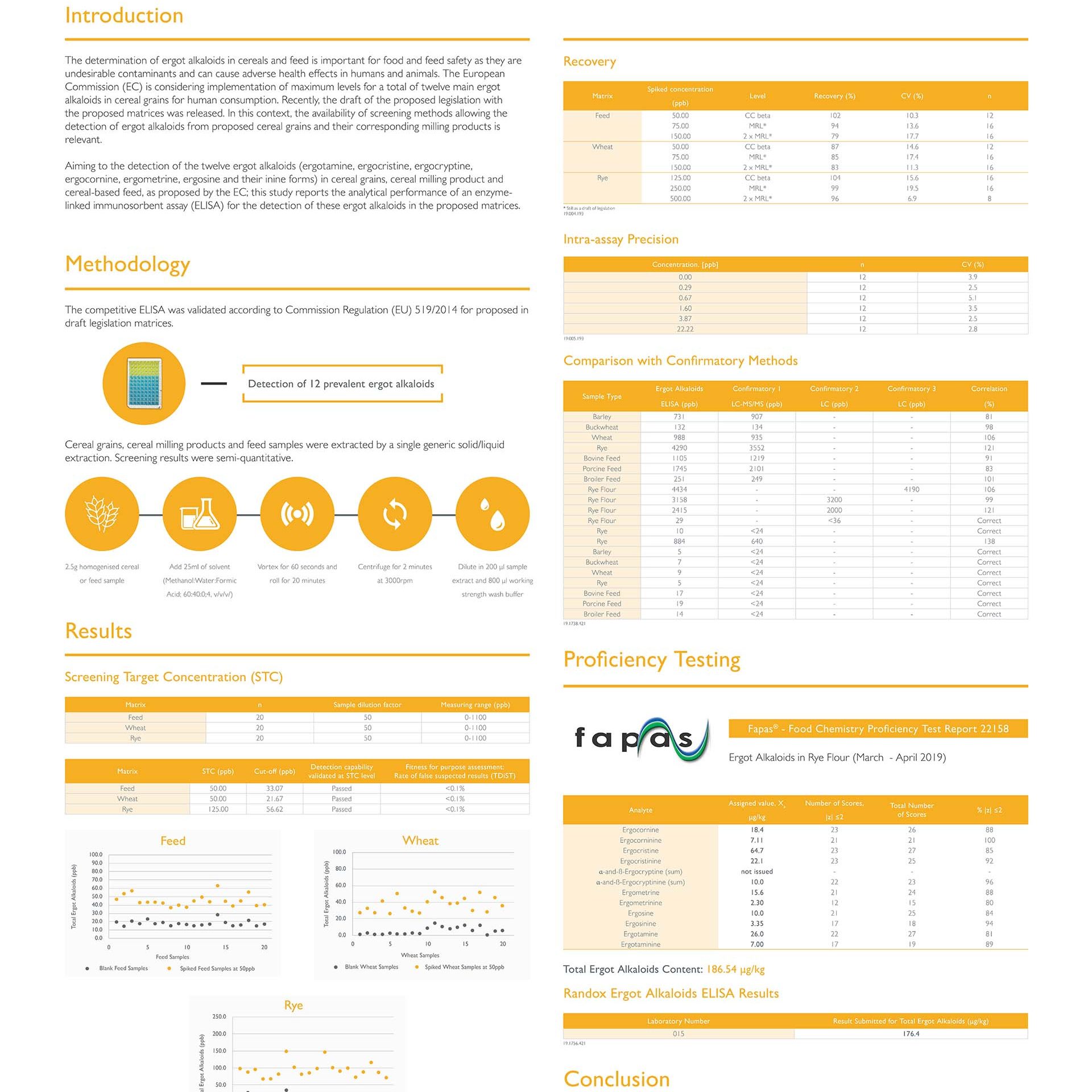
Application of an Enzyme Linked Immunosorbent Assay to the Detection of all Prevalent Twelve Ergot Alkaloids in Cereals and Cereal Based Animal Feed Proposed for European Commission Regulation
The determination of ergot alkaloids in cereals and feed is important for food and feed safety as they are undesirable contaminants and can cause adverse health effects in humans and animals.
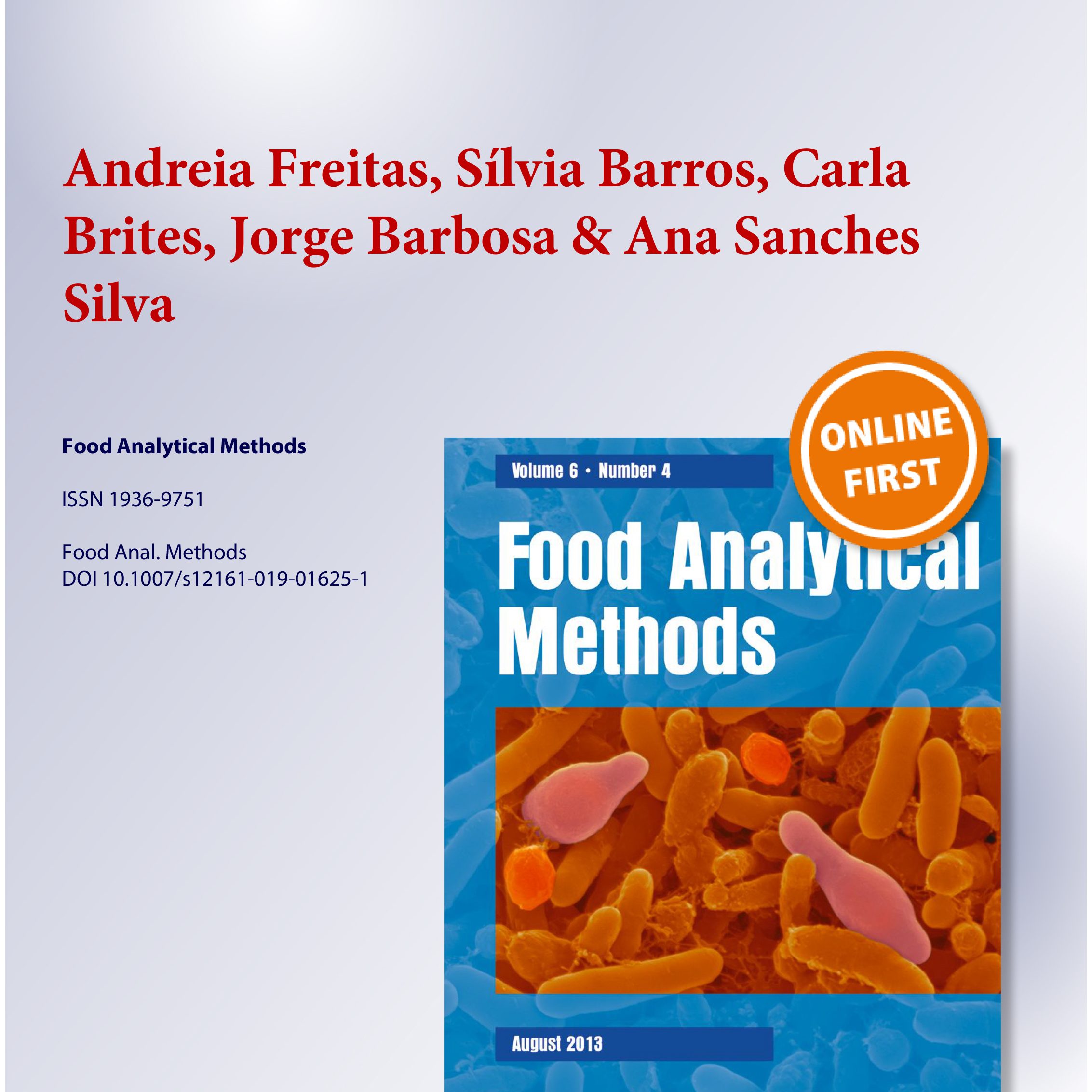
Validation of a Biochip Chemiluminescent Immunoassay for Multi-Mycotoxins Screening in Maize (Zea mays L.)
The word mycotoxin comes from the conjugation of the word “mykes”, which in Greek means fungus and from the work “toxicum”, which in Latin stands for poison. Mycotoxins are secondary metabolites of relatively small molecular weight (MWaround 700) which can pre- or post-harvest contaminate a wide range of commodities from animal or plant origins(Chauhan et al. 2016).